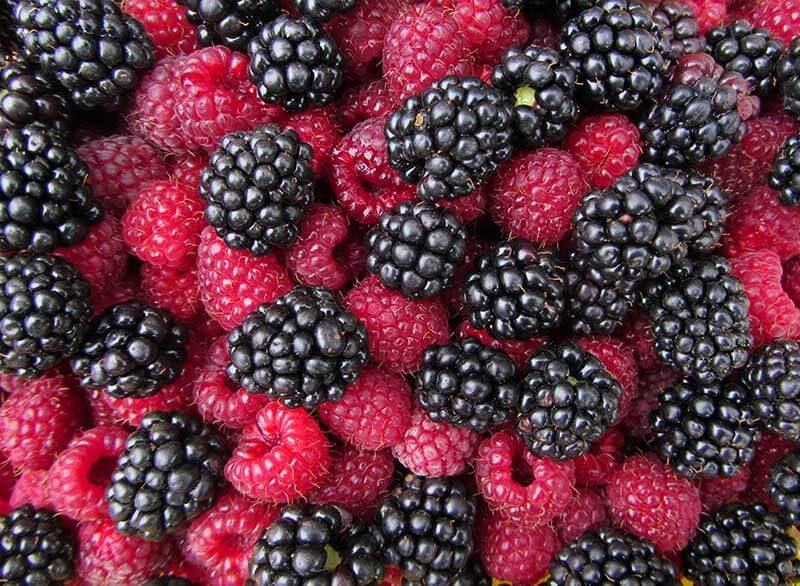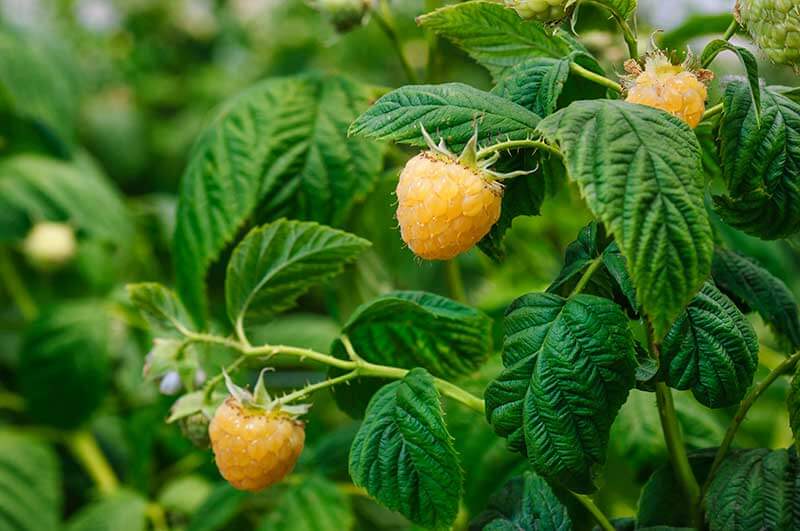How to Plant, Grow and Harvest Blackberries and Raspberries
At one time, backyard raspberries and blackberries were reserved for gardeners with lots of room and time. It's true these tasty berries require a little extra effort, but the delicious harvest makes it all worthwhile. Today, a new generation of modern berries is on the scene. Small in size but big on flavor, they'll even grow in pots on balconies. With these berry basics, having homegrown raspberries and blackberries on your table has never been simpler:
- Understanding How Berry Bushes Grow
- Selecting Berry Varieties for Your Home
- Preparing Your Berry Growing Space
- Planting Raspberries and Blackberries
- Caring for Raspberry and Blackberry Bushes
- Pruning Raspberries and Blackberries
- Enjoying Your Berry Harvest
Understanding How Berry Bushes Grow
Raspberries and blackberries grow a little differently than other common berries. Often called caneberries, these plants produce their fruits on canes that grow from the plant's "crown" — the part of the plant right at ground level, where roots below ground and canes above ground meet. Blackberries only grow canes from the crown, but raspberries spread and produce canes from roots, too.
On caneberries, the crowns and roots are "perennial," meaning they live and produce canes year after year — often a decade or two for well-maintained raspberries.1 However, the canes that grow from them are "biennial," meaning they only live for two years.
For most raspberries and blackberries, fruits only grow on canes in their second (last) year of life. A few types produce a small crop of fall berries in their first year, but the big harvest comes in summer from the 2-year-old canes.

Selecting Berry Varieties for Your Home
When choosing berries, look for types suited to the climate in your location. Cold hardiness — the plant's ability to withstand cold temperatures — is important, because the buds that produce your berries' flowers and fruit must be tough enough to withstand your winters. In warmer climates, you need varieties that can tolerate moderate winter temperatures and still produce big harvests. Your local nurseries can help with information about what types are best for you.
Size is also a consideration. Some caneberries easily grow 7 to 8 feet tall or more, and raspberries can spread underground and show up where you least expect them. However, modern compact berry varieties, such as Raspberry Shortcake raspberry and Baby Cakes blackberry, grow just 3 to 4 feet tall. But they deliver full-size, full-flavor raspberries and blackberries. They're perfect for growing in large containers. Also, their canes are often thornless, unlike most caneberries. That's an important consideration, especially if kids or pets play nearby.
Raspberries come in several colors, including black, purple and yellow. If you're unsure if your favorite berry is a black raspberry or a blackberry, you can tell by the shape of its fruit. When ripe, raspberries separate from their core and look like hollow caps. Blackberries keep their core intact.

Preparing Your Berry Growing Space
Raspberries and blackberries need full sun and well-drained soil that's rich in organic matter to stay healthy and at peak performance. If you're growing in garden soil, it's a good idea to conduct a soil test to make sure your berries get the kind of soil they need for good nutrition. Caneberries do best in slightly acidic soil with a pH near 5.6 to 6.2.1 By testing your soil, you'll know what soil amendments to use to get soil pH just right. By adding lime, you can raise soil pH. Adding garden sulfur or other products can help lower it. Your local county extension office can provide guidance. For raspberries and blackberries, it's best to make soil adjustments before you dig your planting holes. If you're growing in containers, you can buy commercial potting mixes made for acid-loving plants. They'll have the soil pH your berries need.
Planting Raspberries and Blackberries
Caring for Raspberry and Blackberry Bushes
Feed raspberry and blackberry bushes in early spring with a balanced plant food containing essential nutrients, such as Pennington Rejuvenate Plant Food All Purpose 4-4-4 to revitalize your soil while you feed.
Give them a second feeding 12 to 16 weeks later, and they'll stay well fed.
Watering is essential for plump, juicy berries. Bushes need about 1 to 2 inches of water per week during the growing season. Water to supplement rainfall when necessary. Keep an eye out for signs of insect pests that may try to put a damper on your berry plans. Trusted pesticides, such as Sevin brand garden insecticides, help control a broad spectrum of unwanted insects to keep your harvest on track.
With Sevin Insect Killer Ready To Spray or Sevin Insect Killer Concentrate for berry patch coverage, you can treat caneberries up to one full day before your berry harvest. These easy-to-use liquid concentrates kill pests by contact, then they keep protecting against listed pests for up to three months.+
Sevin Insect Killer Dust Ready To Use starts killing pests immediately upon contact. Apply a thin, uniform layer of dust to your caneberries once before they bloom and once after blooming is complete. Always allow at least three days between dusting your berries and harvesting your crops.
Pruning Raspberries and Blackberries
Getting rid of old, unproductive canes keeps berry bushes beautiful and productive. Pruning and thinning raspberries and blackberries should be done annually in late winter — and it's simpler than you may think.
During the growing season, brand new canes are bright green in color. Called "primocanes," they are the ones that won't offer their big fruit crop until the following year. The 2-year-old, fruit-bearing canes, called "floricanes," have a thin, brown bark. After those second-year canes bear fruit, they die — never to fruit again. By late winter, they have gray, peeling bark that stands out from the rest. Just cut all those old, peeling canes back to the crown.
For a single container plant or compact plants, pruning is pretty simple. Use sharp, bypass pruning shears; long-handled loppers work well, too. If you're growing larger plants or berries with thorny canes, always wear thick gloves and a heavy jacket to protect your arms — and don't forget protective eyewear.

Enjoying Your Berry Harvest
When raspberries are ripe, they fall away from their cores, right into your hand. Blackberries show ripeness through softness and color. Harvest both types of berries as soon as they're ripe — and eat them to your heart's content.
If you're processing berries into jams or jellies, don't delay. They'll start to deteriorate after just a day or two in the fridge. If you plan to use berries in cooking later on — say, for a raspberry chipotle chili — spread them on a baking sheet and freeze them individually. Then store them in freezer bags or containers and use them as needed.
You may also want to treat yourself to some cut stems with ripening berries. Paired with garden roses and sprigs of herbs, the red-tinged raspberry leaves and colorful berries are a gorgeous foundation for a casual kitchen bouquet in a rustic, nature-inspired pitcher or vase.
Growing raspberries and blackberries requires a few more steps than growing many garden fruits and veggies, but they're simple steps that yield big rewards. GardenTech brands and the GardenTech blog are here to help you learn and experience all the joys of gardening, including the taste of fresh backyard berries.
+ Except fire ants, fleas, ticks and mosquitoes
Get Monthly Gardening Advice!





